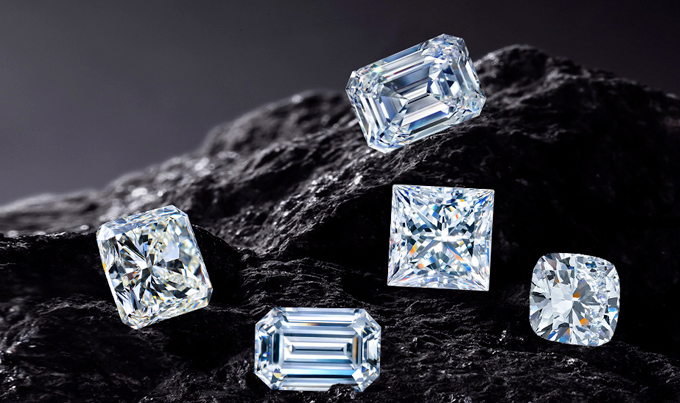Diamonds are categorized based on their origin, formation process, and characteristics. Here are the primary types:
- Natural Diamonds
Formed over billions of years under extreme heat and pressure deep within the Earth’s mantle. Valued for their rarity and natural beauty. - Lab-Grown Diamonds
Created in controlled environments using methods like High-Pressure High-Temperature (HPHT) or Chemical Vapor Deposition (CVD). Identical in composition to natural diamonds but more affordable and sustainable. - Treated/Enhanced Diamonds
Natural diamonds altered to improve appearance (e.g., laser drilling for clarity, irradiation for color enhancement). Must be disclosed in certifications. - Colorless Diamonds
The most classic and sought-after type, graded on the D-Z color scale. “D” represents pure whiteness. - Fancy Color Diamonds
Naturally occurring colored diamonds, such as pink, blue, yellow, or green, caused by trace elements or structural anomalies. Extremely rare and valuable. - Industrial Diamonds
Lower-quality diamonds used in manufacturing, drilling, or cutting tools due to their hardness. - Simulants
Non-diamond materials like cubic zirconia or moissanite that mimic diamond appearance but lack their physical properties.
When choosing a diamond, consider factors like budget, ethical sourcing, and purpose (e.g., jewelry vs. industrial use). Always verify certifications (e.g., GIA, IGI) for authenticity and quality.
